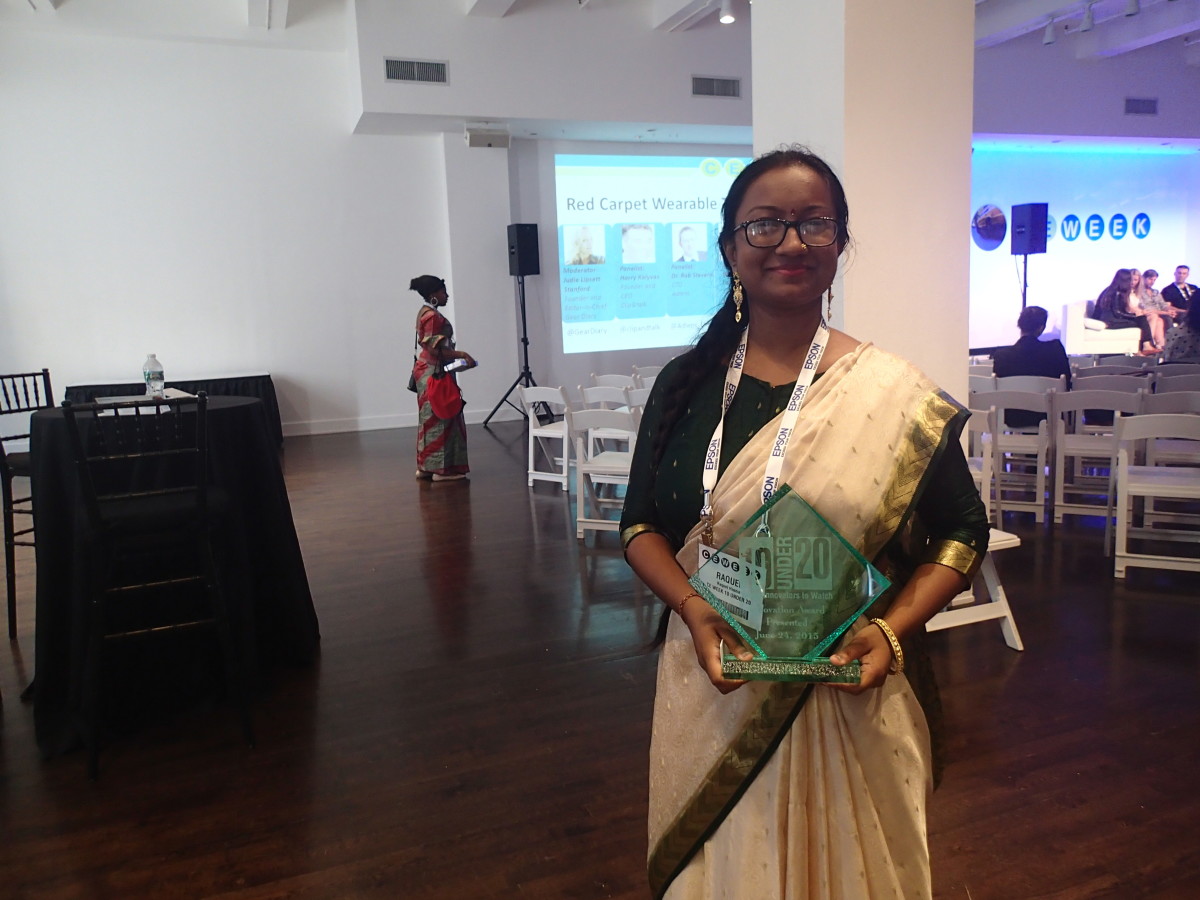Draped in a green, gold and beige sari, Raquel Hosein walks on the stage of the first floor of the Metropolitan Pavilion, in Chelsea. She shows the prize she has just received as people in the audience snap pictures. This Brooklyn student has designed a wireless device to detect the signs of an impending epileptic seizure; on Wednesday, she was rewarded for it.
Hosein’s project is one of ten winners from this year’s 10 Under 20: Young Innovators to Watch competition. The contest, organized by CE Week and the New York City Economic Development Corporation (NYCEDC), celebrates New York City high school and college students for technological innovations.
The winners come from all of New York’s five boroughs. Brooklyn’s schools have nurtured Hosein’s project, which started in a lab a professor allowed her to use at the NYU Polytechnic School of Engineering. Hosein kept working on it while studying at Brooklyn College.
“Basically,” she said about her device, “there are two main components: the cap and the app.”
Hosein created a smartphone and tablet application. It’s linked to a cap that people using the invention will wear. On the cap is a circuit board and electrodes that communicate with the app. The device watches out for unusual brain waves — electrical activity in the brain varying from the norm. A set of algorithms compares the recorded electrical activity with what normal brain waves should be like. If the application detects unusual, pre-seizure cerebral activity, the app warns the person wearing the cap, who can then take medicine or call for help.
“One feature I’m also working on right now,” Hosein said, is having a “911 call button, so you can immediately call 911” when the app detects an impending seizure.
Hosein’s project resonated profoundly with Rashid Ferrod Davis, one of the judges and the founding principal of Pathways in Technology Early College High School (P-TECH). When Davis was younger, one of his friends died of an epileptic crisis in front of his eyes. Davis appreciated that the 10 Under 20 competition contestants wanted “really to try to do something” with technology.
Hosein used to suffer from epileptic seizures back when she was 15 years old. “I know what it’s like to fall down, and have a seizure,” Hosein said, “to see your friends and family just get upset, and it’s awful. But hopefully this device can help somebody else that’s in that position.”
Frank Migliorelli, director of digital experience at the New York Public Library, said Hosein “was someone who was passionate about this thing.” Migliorelli said he wished the spirit he found during the competition was more promoted.
“Don’t ask ‘Why,’ ask ‘Why not,’” he said. He’d also like to see more resources and mentorship programs dedicated to teenagers who have innovative projects like Hosein’s. “This is nuts,” he said referring to the struggle young tech innovators like Hosein have to go through to develop and pitch their projects. “It’s insane, we’re in New York freaking City,” Migliorelli said.

Hosein started to get interested in technology when she was 13 while volunteering at a veterans hospital, where she thought of developing a sensitive prosthesis. This early interest in technology brought some frustration to Hosein, who is now 19. One of the main obstacles she faces on the technology scene, she said, is her young age.
“Young people have no credibility almost,” she said. “It’s very difficult for us to get started in a lab, nobody trusts us, they think we can’t do anything, they baby us.”
“The reality is, it’s a very competitive, hard space,” said Warren Buckleitner, another judge of the competition and the editor of Children’s Technology Review. “The contest was very effective in giving young people” a taste of what it’s like to compete in the technology business, he said. “It’s expensive to make that stuff and you’re competing with real competitors, this is the real world,” he said.
Majora Carter, the CEO of StartUp Box and one of the judges for the competition, said she gets why young inventors like Hosein feel frustrated, but she also thinks that they should take some time for themselves. “Most of them are in high school,” she said. “It’s gonna be fine, you’re going to have plenty of time to take over the world,” she said.
Hosein is now in the process of applying for a patent. She said she would then go through the Federal Drug Administration approval process, and hopes to have her pre-seizure detection device working within the next couple of years.
Brooklyn student wins tech competition for detecting epileptic seizures before they happen







